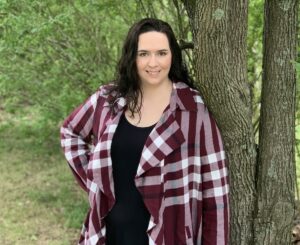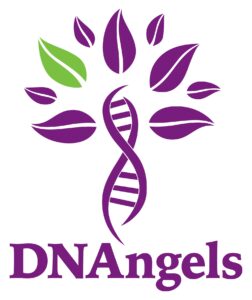Introducing a new column: We invited DNAngels—a nonprofit organization that’s been highly successful at helping NPEs (not parent expected), adoptees, and donor-conceived individuals find birth family—to write a new column. Here’s the story of one of its recent successes—how it solved an international case using genetic genealogy techniques. In future articles, the organization’s team will offer tips and strategies to help you solve your own cases.
By Aimee Rose-Haynes
Direct-to-consumer DNA testing via Ancestry, 23andMe, and other companies has rapidly replaced the arduous tasks of hands-on library research, grave searching, and contacting strangers for the purposes of finding long-lost relatives—a tremendous advance since just a decade ago, when locating biological family or records to validate family lineage was a near impossible feat.
While these tests—which rely on saliva samples—are simple, quick, and affordable, interpreting the results is often a confusing and time-intensive process.
An International Case
In November 2019, I took on a special challenge that illustrated the tenacity needed to solve cases. The case involved a search for records from Panama and Columbia to help determine the client’s origins. Bob called on DNAngels to help him find his mother’s biological father. Ann, his mother, was born in New York in 1961 and raised by an Italian-American mother and stepfather. Her mother refused to tell her who her biological father was and took his name to the grave. Ann thought that was it—that she’d never know her paternal family—and gave up on the thought of trying to find him.
Bob, wanting to help his mother in any way possible, ordered Ancestry DNA tests for her, himself, his sister, and a few other relatives. Once he received the kits, he mailed them back immediately in hopes of finding the man Ann had spent decades wondering about and answering her questions. Was he tall? Was he a nice man? Where was he raised? What were his parents like? What did he look like?
Bob found the results that arrived a few weeks later both exciting and confusing. Ann’s ethnicity report had significant amounts of Spanish, Panamanian, and Columbian heritage. This gave them their first clue about where her biological father could be from. For Bob, looking at the numbers and trying to figure what it all meant was like trying to read a foreign language. He needed help.
The Search
Bob contacted DNAngels in the autumn of 2019 for help solving his mother’s DNA parentage puzzle. I requested access to his family tree and his mother’s DNA and went to work. I started by sorting his matches and separating Ann’s maternal and paternal lines. This was very easy to do since Bob had gotten tests for so many people in the family.
I looked at Ann’s matches and anticipated that the matching process would be difficult. Ann had six matches in the range of 108 centimorgans (cM) to 184 cM. A cM is a unit of measurement representing the length of DNA shared by two DNA matches. Testing companies use an approximate range of roughly 8 cM to 3,700 cM to determine relationships. The higher the cM, the more closely one is related to a match, with 3,700 indicating a parent/child relationship. I began by looking at the trees of all of Ann’s matches to try to isolate a most recent common ancestor (MRCA). Unable to get very far, I updated Bob, with whom I was in daily contact at this point in the process.
Bob informed me that some additional family members had also taken a 23andMe DNA test, and with their login information in hand, I hoped to locate a missing puzzle piece. I had handwritten charts, sticky notes, and highlighted names all over the living room table and floor for nearly two months for this case!
I was able to build a tree based on Ann’s 186 cM match and discovered that Ann’s great grandparents and second great grandparents were the same couple. This indicated that Ann’s 186 cM match was inflated due to endogamy—the custom of marrying only within the limits of a local community, clan, or tribe. So that became another puzzle to work through. Complicating things still further was that two matches on 23andMe were uninterested in helping.
Nonetheless, I persisted, finally finding an MRCA and building the family tree, which included 9 children. I then began linking Ann’s DNA matches to the familial lines that were slowly coming together and soon was able to eliminate three lines, leaving five lines left to trace.
I began researching, reading through US, Columbian, and Panamanian newspaper clippings—obituaries and public records including port arrivals and departures—as well as social media, searching for anything that might help expand this family tree. Bob was also relentless in helping to track and contact anyone in these family lines.
I never imagined I would ever use what I’d learned in Mr. Flores’ high school Spanish class; if I had, I’d have paid more attention back then. Bob sent me messages and voice recordings from potential family members, most of which were in Spanish. Using Google Translate much more than I’d like to admit, I learned a few important things necessary to solve this case.
Bob had discovered that the MRCAs had taken in and adopted two sons. A week later, I discovered that another son had never left Panama. This narrowed the search from five family lines to two and the details finally started to come together.
Now left with two brothers as potential candidates for Ann’s grandfather, Bob and I were excited as we got closer to solving the case. By this point, I’d worked on this daily for about 10 weeks and refused to give up. I continued digging even deeper into these two men, John and William, trying to place either man from Columbia in New York, where he might have met Ann’s grandmother.
William was born in Columbia, and I located a record of him having lived in New York. He actually married someone who was related to Ann’s maternal line. This union proved he had been in the same area as Ann around the time she was born. William had 2 daughters and a special needs son who was eliminated as a suspected biological father. Bob, who had been in contact with one of William’s daughters at this time, had William’s granddaughter tested, which revealed that she shared 236 cM with Ann. This excluded William, because if he’d been Ann’s paternal grandfather, his granddaughter would be expected to match Ann at a half niece relationship (Ann and the granddaughter’s mother would be half-sisters), or about 600 cM to 1,300 cM.
John, the other potential grandfather to Ann, was a soldier in the U.S. Army who was killed in action in Korea. I found a port arrival record showing he came to New York in 1928. I also found a record indicating he married in New York a year later. He would go on to have daughters as well as three sons—Manny, Greg, and Jake.
Manny died in infancy, and Greg couldn’t be located, so Jake was the only possible relative to search for. If Jake were still living, he’d have been roughly 90 years old. Fortunately, one of the cousins Bob had contacted knew that Jake was still living and was in New York. That cousin helped Bob get in touch with Sam, one of Jake’s sons, who was shocked when Bob told him DNAngels had discovered his father might have been Ann’s biological father. He was intrigued and willing to help. Bob sent him a DNA test in late January 2020 to confirm the suspicion.
While Bob waited on pins and needles for Sam’s test to come back, I stayed busy and continued to research and build the family tree. Sam’s test came back on March 6, 2020, revealing that Ann and Sam matched at 1,455 cM, confirming a half sibling relationship. Jake was her biological father. Bob sent a DNA test to Jake, the results of which showed a 3,299 cM—an amount signifying a parent-child relationship. I’d solved Ann’s case after nearly five months.
Ann went from knowing nothing about her paternal line to not only knowing her father’s name but also being able to meet him. She now has 9 half-siblings as well as several aunts, uncles, and cousins. Jake’s family has welcomed her and her family into their lives with open hearts.
Never give up!
If you have a question you’d like to see answered in a future column, send it to bkjax@icloud.com.
Aimee Rose-Haynes is a lead genetic genealogist for DNAngels and a member of the International Society of Genetic Genealogy and the National Genealogical Society. She has 20 years of traditional genealogy and 6 years of genetic genealogy experience.
Stephanie Leslie and Margaret Renner also contributed to this article.

DNAngels, an organization dedicated to DNA results interpretation and more, was founded by Laura Leslie-Olmsted in February 2019 with the goal of helping not parent expected (NPE), adopted, and donor-conceived clients find their biological families. Seven months after being founded, it became a 501(c)(3) nonprofit organization. In 2019, the team solved approximately 550 cases; in 2020, it solved 697 cases, and it expects to continue to increase those numbers in 2021. DNAngels has a 92% case solve rate, which means the majority of its clients find the answers to their parentage mysteries. In 2021, it is dedicating every month to a specific theme. The theme for January is “Never Give Up” to highlight DNAngels’ dedication to finding answers for the 8% unsolved or “on hold” cases. Learn more about DNAngels at its website, and find it on Twitter @Dnangels4 and on Instagram @Dnangelsorg.


